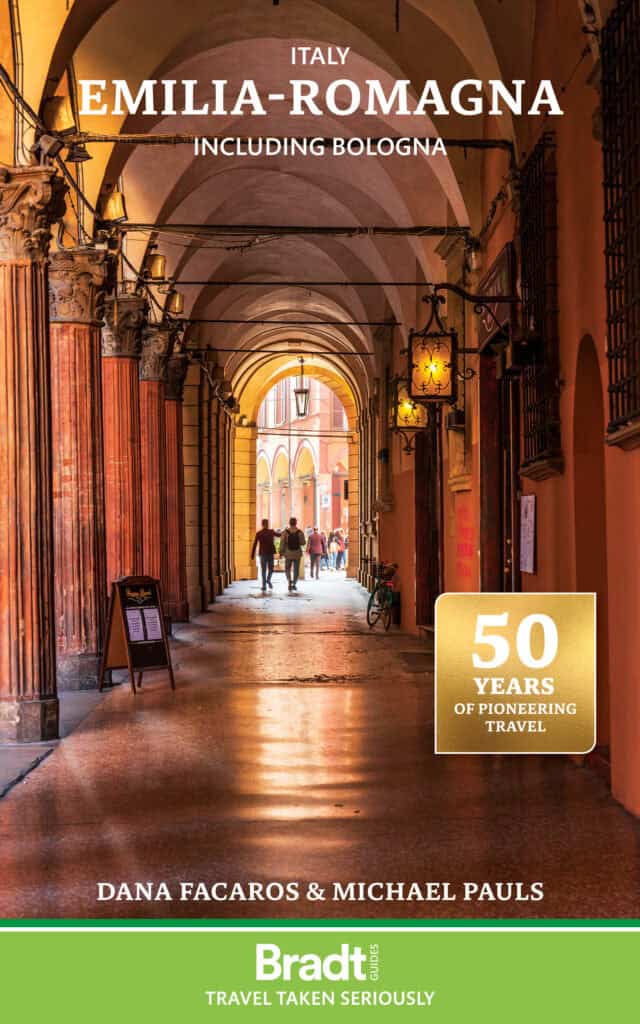The running joke in Emilia Romagna is that the region’s layout seems to have been designed by a government committee. But in actual fact, it probably was.
Sometime near the close of the Second Punic War, some Roman senators, engineers and military men sat down together and came up with the plan for developing this newly acquired territory. The biggest expanse of flat land in Italy gave them a chance to put the Roman passion for rationalism into practice on a massive scale, and their hardnosed pragmatism has marked everything in the region’s life for the last 2,200 years: its politics, its ways of thinking, and even at times its art. That straight-as-an-arrow Roman high road that ties everything together, the Via Emilia, gave the land its character along with its name.
Still standing today, this road runs almost perfectly straight for 320km (200 miles). All the hills are on one side, and all the flatlands on the other; gorgeous cities are dotted along it, at regular intervals; and the whole thing is liberally sprinkled with red bricks and tortellini.
Emilia-Romagna’s great art towns are strung out like pearls along the Via Emilia and the main rail line. But unlike Milan and Venice (which sandwich the major towns and act as good gateway cities), these gorgeous settlements remain off the tourist radar and are therefore a joy to explore.
We’d recommend flying into Milan, and after a day in Piacenza, spend two in Parma, with a day trip perhaps to Colorno or Busseto. Spend a morning in Reggio Emilia before heading to Modena for two nights, including a day trip to Sassuolo, the summer home of the Este family. Give Bologna three days; head to Ravenna for two days, then end with two days in Ferrara (just a short hop from Venice).
Bologna
‘You must write all the beautiful things of Italy,’ said the Venetian on the train, but the man from Bologna vehemently shook his finger. ‘No, no,’ he insisted. ‘You must write the truth!’
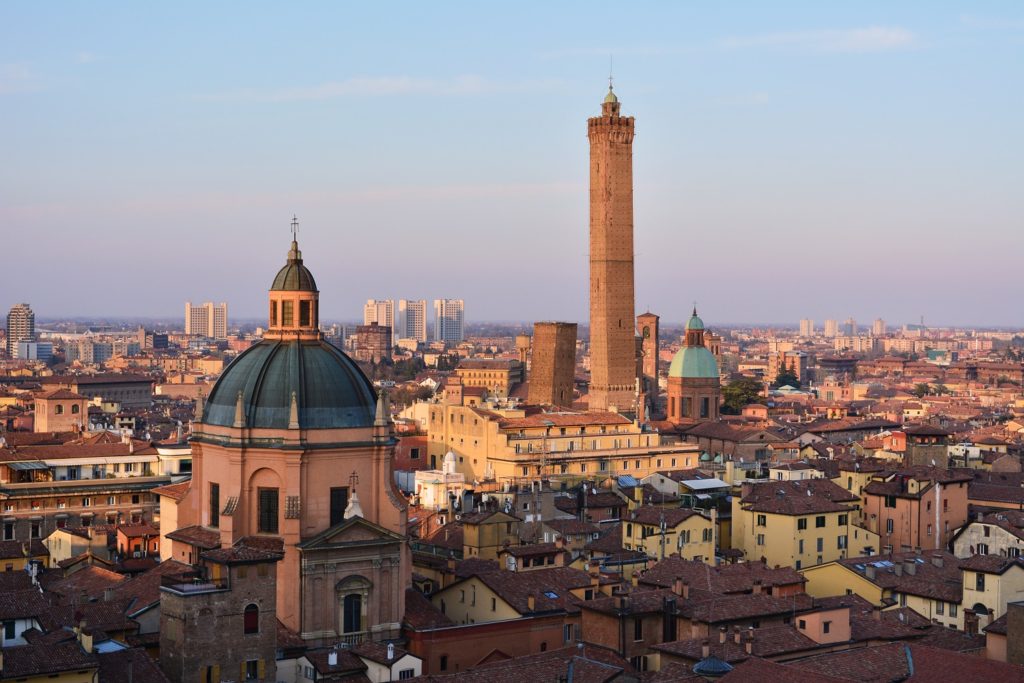
And it is precisely that, a fervent insistence on the plain truth as opposed to the typical Italian delight in appearance and bella figura, that sets Bologna apart. A homespun realism and attention to the detail of the visible, material world are the main characteristics of the Bolognese school of art. The city’s handsome, harmonic and well-preserved centre disdains imported marble or ornate stucco, preferring honest red brick. Bologna’s municipal government, which was long in the hands of the Italian Communist Party (now the PDS), is considered the most efficient of any large city in Italy.
La Dotta, La Grassa and La Rossa (the Learned, the Fat and the Red) are Bologna’s sobriquets. It may be full of socialist virtue, but the city is also very wealthy and cosy, with a quality of life often compared to Sweden’s. The casual observer could well come away with the impression that the reddest things about Bologna are its bricks and its suburban street names such as Via Stalingrado, Via Yuri Gagarin and Viale Lenin.
But Bologna is hardly a stolid place – its bars, cafés and squares are brimming with youth and life, and there’s a full calendar of concerts from rap to jazz to Renaissance madrigals, as well as avant-garde ballet, theatre and art exhibitions.
Ferrara
Ferrara’s good fortune is to be off the tourist track. The people who are always getting in your way in Venice and Florence have never heard of the place, despite the fact that the entire city is a UNESCO World Heritage Site, and its university is rated as one of Italy’s best.
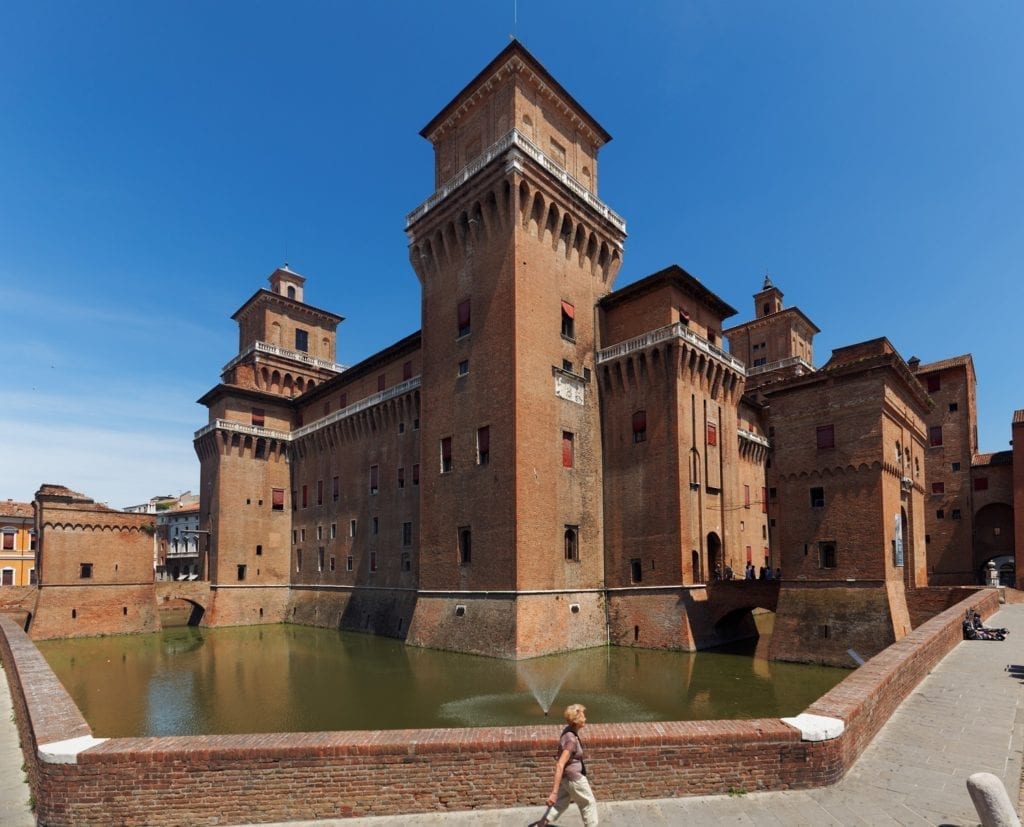
But all the better: seeing the sights is a stress-free delight without the crowds. Do it by bike. Ferrara’s proudest distinction right now is that of all European cities, it takes third place in the ratio of bicycles to people; many of the hotels are happy to lend or rent you one.
Modena
Modena puts on a class act – ‘Mink City’ they call it, the city with Italy’s highest per capita income, a city with ‘a psychological need for racing cars’ according to the late Enzo Ferrari, whose famous flame-red chariots compete with the shiny beasts churned out by cross-town rival Maserati (indeed, car lovers won’t want to miss the Ferrari Museum). Sleek and speedy, Modena also has a lyrical side of larger-than-life proportions: Luciano Pavarotti was born here, and its scenographic streets take on an air of mystery and romance when enveloped in the winter mists rising from the Po.
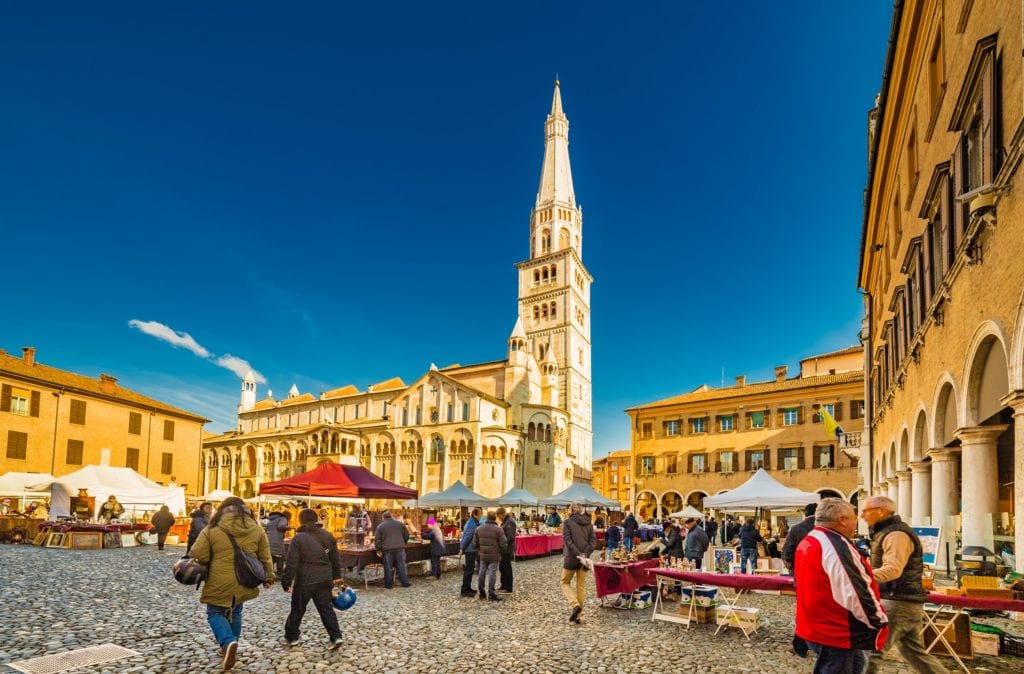
Italy’s richest city is also one of its most progressive; Modena has the largest car-free centre in Emilia-Romagna, making it a delight to walk around. The serene old capital of the Este comes back to life, and the Baroque effect is made perfect by the cadets of the National Military Academy, who live in the old Ducal Palace and never go out without their hats and capes.
Parma
One of Italy’s great art cities, and the second city in Emilia-Romagna after Bologna, Parma’s many admirers cite her splendid churches and elegant lanes, her artworks and antiquities, the lyrical strains of grand opera that waft from her Teatro Regio – a house that honed the talents of the young Arturo Toscanini – and the glories of its famous cheese and ham at table as reasons not only to visit, but to return again and again. There are plenty of castles in the countryside, and opera lovers can trace the career of Giuseppe Verdi around his home town of Busseto.
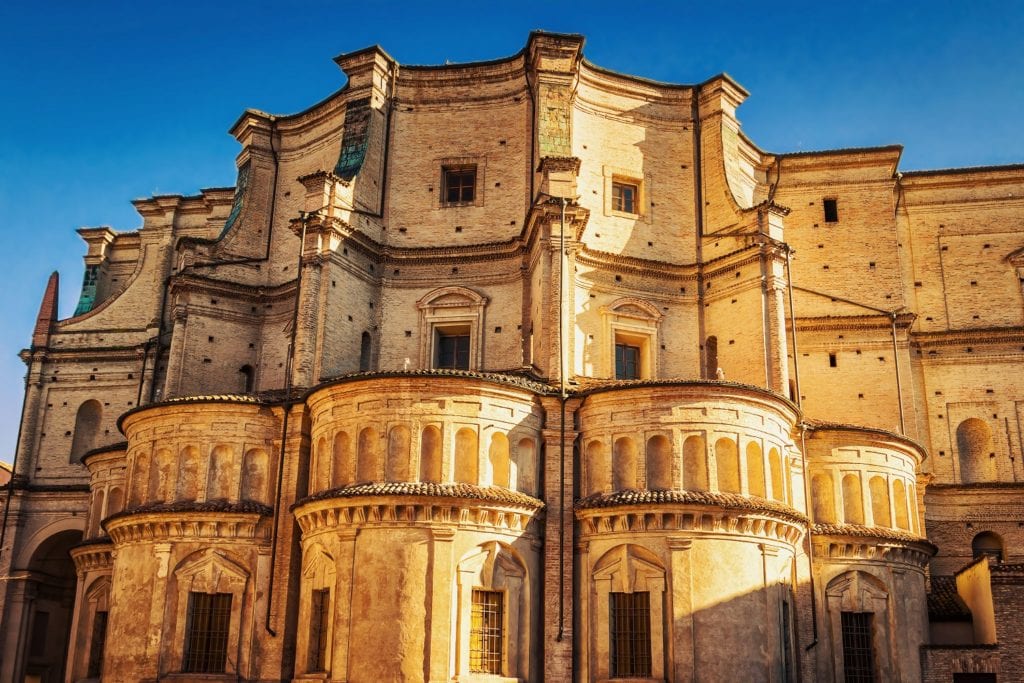
The French daily Le Monde once rated Parma as the best Italian city to live in, for its prosperity and quality of life. It would, of course, since Parma is also the Italian city most influenced by French culture, thanks to a remarkable episode in the 18th century when the city filled up with Enlightenment French artists and philosophes, followed by a booster shot of Gallicism when it came under the rule of Napoleon’s forsaken Empress, Marie-Louise. Quality of life Parma has in abundance. You’ll eat well here, even by Emilia-Romagna standards, in Italy’s first UNESCO Creative City of Gastronomy.
Piacenza
Vying with the more famous and obvious charms of nearby Parma, Piacenza is the unassuming wallflower of Renaissance art cities, with one of northern Italy’s finest cathedrals, masterpieces by Botticelli and Antonello da Messina, a memorable museum, two of the most gallant horses in Italy, and the world’s most famous bronze liver.
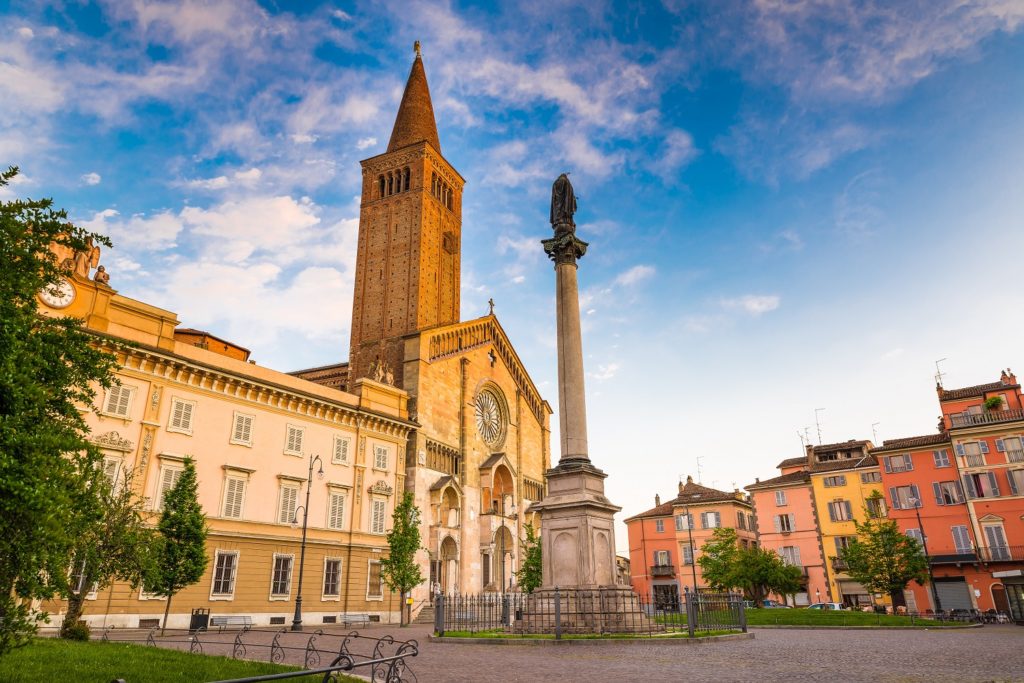
Verdant valleys stretch from Piacenza into the Apennines, where you can visit Castell’Arquato, a perfect Tuscan hill town that somehow sneaked over the Apennines, frescoed castles, the world’s first shit museum and Bobbio, a candle in the Dark Ages, when it was the headquarters of Irish monasticism on the Continent.
Ravenna
Tucked away among the art towns of Emilia-Romagna there is one famous city that has nothing to do with Renaissance popes and potentates, Guelphs or Ghibellines, sports cars or socialists. Little, in fact, has been heard from Ravenna in the last thousand years.
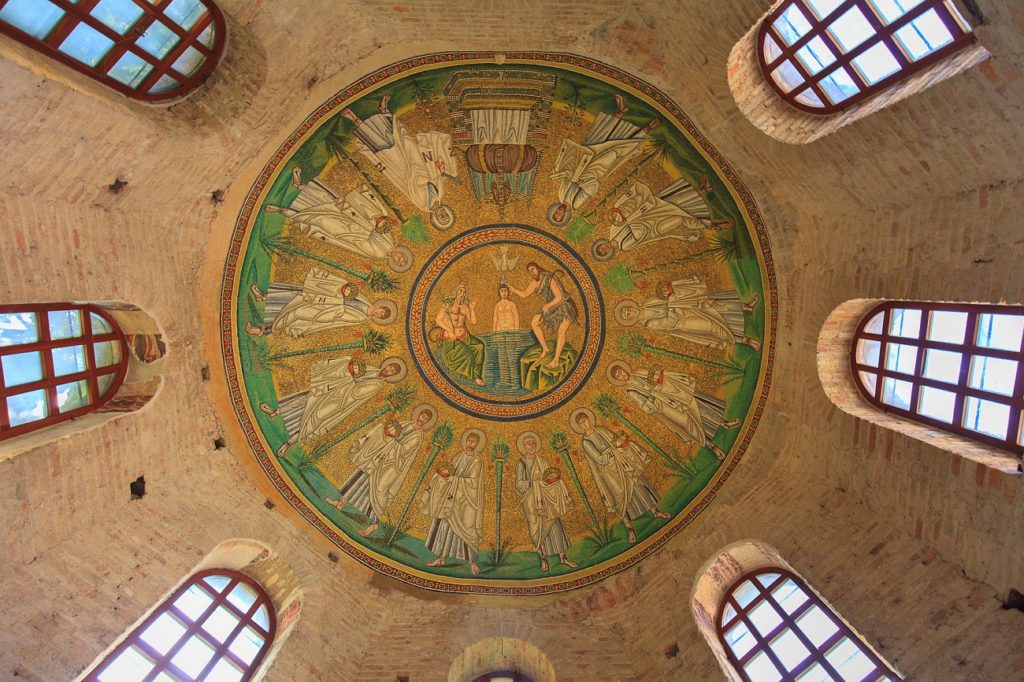
Before then, however, this little city’s career was simply astounding – heir to Rome itself, and for a time the leading city of Western Europe. For anyone interested in Italy’s shadowy progress through the Dark Ages, this is the place to visit
Reggio Emilia
The people of Reggio all agree that they don’t care if you call their town Reggio nell’Emilia, Reggio di Emilia or simply Reggio Emilia, as long as you do call them. Long the odd man out among the region’s art cities, Reggio lacks the compelling attractions of Parma, Bologna or the others. Nevertheless, it is a handsome, wellorganised and likeable city, and you won’t regret stopping over.
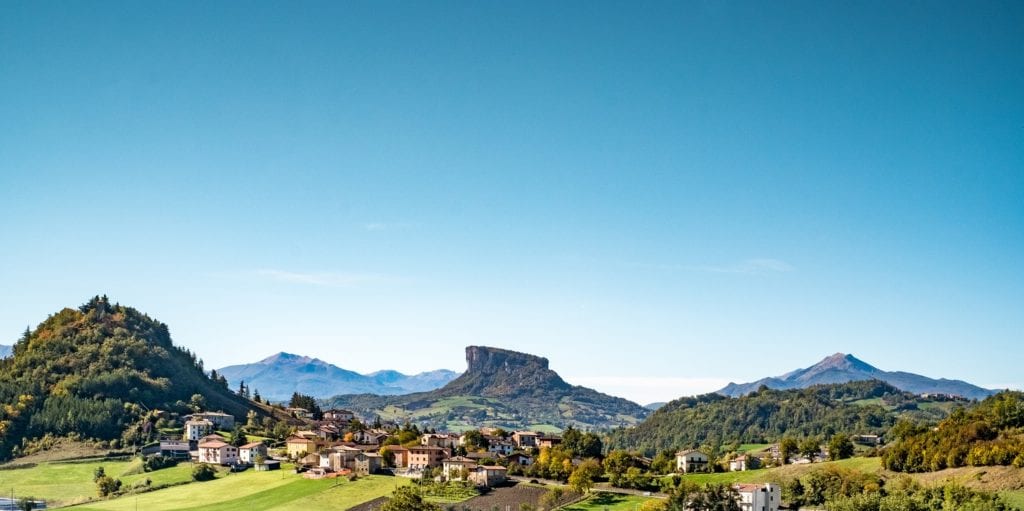
Reggio’s hinterlands include a clutch of Baroque memories around the Po in towns such as Guastalla, Gualtieri and Correggio. To the south is one of the more attractive stretches of the Emilian Apennines, home to the famous Castle of Canossa (or what’s left of it), a bit of skiing, a bit of scenery, and the outlandish Rocca di Bismantova.
More information
Discover more of Emilia-Romagna with our comprehensive guidebook.
